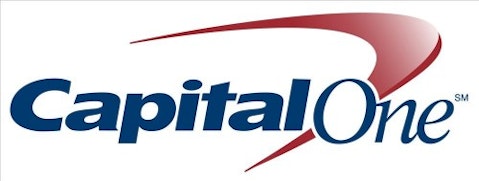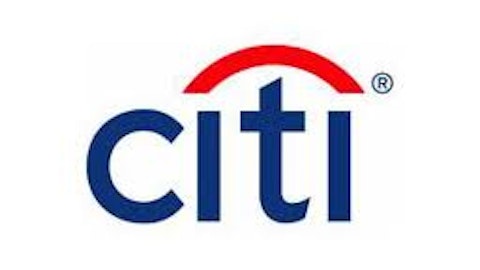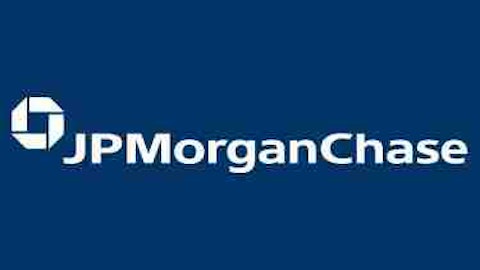The stigma of “big bad banks” may never go away in market news, but that doesn’t mean large financial institutions are bad investments. In one company’s celebrity heavy advertising, the punchline asks, “What’s in Your Wallet?” Capital One Financial Corp. (COF) asks that question, but I ask about my portfolio, particularly what I need to keep it balanced. Banks can be riskier than many investments, but the upside potential is worthy of some research. After its decline a few weeks ago, Capital One flashed on my radar.
Taking the industry into perspective, banks have an upside because the economy is crawling in the positive direction. With housing returning to better days and consumer confidence on the rise, banks will be lending more. These factors are promising, but they are not quite here yet and therefore investors need to be patient. The financial sector may not be keeping pace with the S&P and its eleven percent gain TTM, but it is still in the green at over four percent TTM, even with sell-offs after earnings are released.

| Capital One Financial Corp. (NYSE:COF) | Bank of America Corp (NYSE:BAC) | |
| Net Income | 3,517 | 4,188 |
| Earnings per Share (EPS) | 6.16 | 0.25 |
| Total Liabilities | 272,419 | 1,973,018 |
*Preliminary statistics for 2012, in millions of USD besides EPS. S&P 500 index data: S&P 500 Copyright © 2013
When dissecting these two companies, differences are numerous but they have both adopted the universal bank model. Both companies offer everything from personal banking to investment services. Although Bank of America Corporation is much larger, it doesn’t have a huge edge in net income, and it’s earnings per share are dwarfed by Capital One. Liabilities are important to examine. They don’t necessarily mean debt, but when it comes to sustainable growth, less money committed to liabilities is better. Virtually every bank is still recovering from the financial crisis, but some of the players in the second tier weren’t hit as hard and are more effectively making a comeback. Capital One is gradually building its free cash flow while Bank of America is trying to break into positive territory. Banks may not have Cupertino free cash, but staying in the green is essential.
Fourth quarter estimates for Capital One were below projections and analysts have cut price targets, so the share price took a knee-jerk dip. At its current price, it is trading at a discount when considering long-term projections and price targets, even after the cuts. Consensus estimates put EPS at $6.53 for 2013, which translates to the stock trading at under nine times forward earnings. The previously mentioned peer Bank of America trades at a similar valuation, but don’t forget about the excessive liabilities.
If the numbers on financial companies stress you out, take a deep breath and switch to a consumer perspective. Both Capital One and Bank of America offer checking account services. It’s tough to get interest rates of any amount today, but if you want one at the big banks, you’re likely going to be charged a fee unless you have a high balance, which most consumers do not maintain. Even with this premium account, Bank of America has a maximum rate of 0.03%. This isn’t a good sign of financial health.
This may sound more like advertising, but with any bias aside, charges are simply less at some companies. Capital One waives their fees for checking accounts with a daily balance of just $300. They offer rewards programs on both basic and “premier” checking, offer a rate of up to 1% on high yield checking (which does, however, have a high required balance), and even offers completely free online checking through Capital One 360, which was recently created from ING Direct. The bottom line: the company offers a variety of services that appeal to every type of consumer, and checking accounts are just the tip of the iceberg. In the most basic summarization, services need to be attractive to generate profits and returns for shareholders.
Stock talk of banks may be too much for some to handle, even if the reports contain good news. For a balanced investment consideration, it is comforting to invest in companies that you use, would use, and would recommend to others. If you’re not confident in your portfolio’s companies, good luck sleeping at night.
The article More Than the Card in Your Wallet originally appeared on Fool.com and is written by Kyle Vaughan.
Copyright © 1995 – 2013 The Motley Fool, LLC. All rights reserved. The Motley Fool has a disclosure policy.




